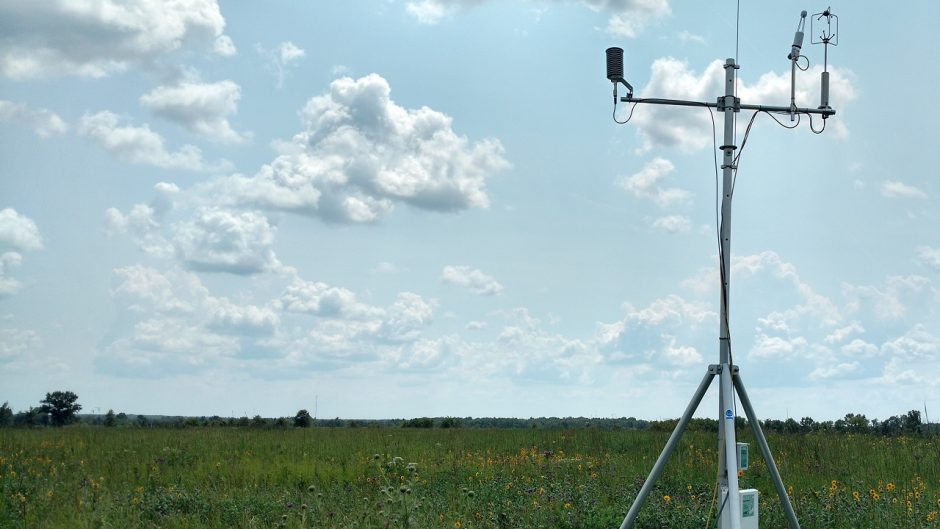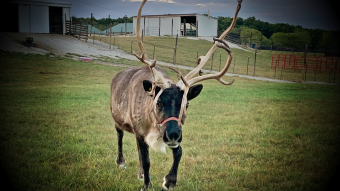
June 5, 2023
Contact: Courtney Perrett, 573-882-6217, cperrett@missouri.edu
One of the main reasons plants use water is to allow them to absorb carbon dioxide from the atmosphere. This means that, in plants, the water and carbon cycles are tightly linked. In a new study, researchers from the University of Missouri and the United States Department of Agriculture (USDA) used this foundational principle to identify sustainable farming practices aimed at helping staple crops like corn and soybeans thrive during extreme weather conditions that have become more common in the Midwest.
This study examined how farming practices affect crop resilience to climate change by examining water and carbon fluxes in three contrasting ecosystems: A business-as-usual tilled cropping system, an aspirational no-till cropping system with cover crops, and a native tallgrass prairie ecosystem.

“One of the big goals is what we call climate-smart agriculture, which can mean using crops to absorb carbon out of the air, but it also means trying to adopt farming practices that help farms adapt to the changing climate,” USDA research hydrologist Adam Schreiner-McGraw said. “As it gets hotter, plants get more stressed, and that means they often have lower yields. This research is focused on understanding adaptation and how to work toward more resilient agro-ecosystems.”
A comparison of rates of evapotranspiration — when water transfers from the land to the atmosphere— and carbon dioxide exchange revealed interesting patterns among ecosystems. In an analysis of data collected over the past four-year cycle, the native prairie ecosystem had higher rates of evapotranspiration than the tilled cropping system. In comparison, however, the prairie’s rate of evapotranspiration didn’t differ much from that of the no-till cropping system. Further, both cropping systems had higher amounts of plant growth (i.e., carbon uptake) than the native prairie.
From these findings, the tilled cropping site appears the most sensitive to environmental changes compared to the native prairie, which is most resilient to extreme weather, Schreiner-McGraw, who works in the USDA’s Cropping Systems and Water Quality Research Unit on MU’s campus, said. Moreover, because the no-till system has the most crop diversity, including corn, soybeans, wheat, and hay, it had the most variable rates of evapotranspiration. This phenomenon Schreiner-McGraw attributes to agricultural management strategies.
Understanding variable rates of evapotranspiration help scientists weigh if the ‘planned’ management has a bigger impact on the water and carbon budgets than the ‘unplanned’ weather variability, which can help with predictions for crop water and carbon uptake as extreme weather gets worse.
Another way to build environmental resistance is to plant a diversified rotation of crops over the long term, said Jeffrey Wood, an assistant professor in the MU School of Natural Resources. As climate fluctuations intensify — for Missouri, that’s warmer, wetter winters and drier summers with less frequent rain — understanding how best to support crop adaptation and which crops to plant at what times of the year has become increasingly necessary.
“The type of work we do lends itself to collaboration because we all share data in a community-based network,” Wood said, “People are always willing to share ideas, which makes it easy to work together and contribute to research that expands in scope from the problems one researcher might be working on locally to those another might face on a bigger scale.”
“Agriculture accentuates interannual variability in water fluxes but not carbon fluxes, relative to native prairie, in the U.S. Corn Belt” was published in Agriculture and Forest Meteorology. Co-authors include Megan E. Metz, John Sadler and Kenneth Sudduth. This research is a contribution from the Long-Term Agroecosystem Research (LTAR) network, which is supported by the USDA.



